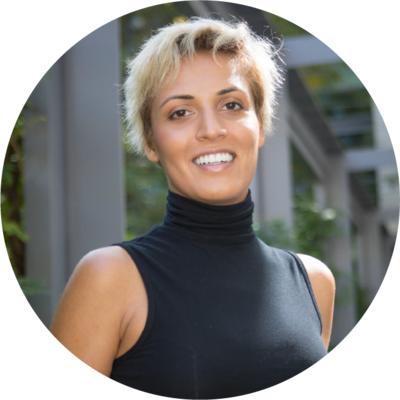
Keynote Presentation
Building Scalable Quantum Information Systems
Prineha Narang, Harvard University & Aliro Quantum »
Professor & CTO
Wednesday, October 20, 2021 @ 8:30-10:30 MT — UTC-6
Biography »
Prineha Narang is an Assistant Professor at the John A. Paulson School of Engineering and Applied Sciences at Harvard University. Prineha came to Harvard University from the Massachusetts Institute of Technology where she worked as a Research Scholar in Condensed Matter Theory in the Department of Physics. She received an M.S. and Ph.D. in Applied Physics from the California Institute of Technology (Caltech). Prineha’s work has been recognized by many awards and special designations, including a Friedrich Wilhelm Bessel Research Award from the Alexander von Humboldt Foundation, a Max Planck Sabbatical Award from the Max Planck Society, and the IUPAP Young Scientist Prize in Computational Physics in 2021, an NSF CAREER Award in 2020, being named a Moore Inventor Fellow by the Gordon and Betty Moore Foundation for pioneering innovations in quantum science, CIFAR Azrieli Global Scholar by the Canadian Institute for Advanced Research, and a Top Innovator by MIT Tech Review (MIT TR35). In 2017, she was named by Forbes Magazine on their “30under30” list for her work in quantum science and engineering. Outside of science, she is an avid triathlete and runner.
Abstract »
Quantum information technologies are expected to enable transformative technologies with wide-ranging global impact. Towards realizing this tremendous promise, efforts have emerged to pursue quantum architectures capable of supporting distributed quantum computing, networks and quantum sensors. Quantum architecture at scale would consist of interconnected physical systems, many operating at their individual classical or quantum limit. Such scalable quantum architecture requires modeling that accurately describes these mesoscopic hybrid phenomena. By creating predictive theoretical and computational approaches to study dynamics, decoherence and correlations in quantum matter, our work could enable technologies that are inherently more powerful than their classical counterparts ranging from scalable quantum information processing and networks, to ultra-high efficiency optoelectronic and energy conversion systems. In this talk, I will present examples from my research group on describing, from first principles, the microscopic dynamics, decoherence and optically-excited collective phenomena in matter at finite temperature to quantitatively link predictions with 3D atomic-scale imaging, quantum spectroscopy, and macroscopic behavior. Capturing these dynamics poses unique theoretical and computational challenges. The simultaneous contribution of processes that occur on many time and length-scales have remained elusive for state-of-the-art calculations and model Hamiltonian approaches alike, necessitating the development of new methods in computational physics.1–3 I will show selected examples of our approach in ab initio design of active defects in quantum materials4–6, and control of collective phenomena to link these active defects.7–9 Building on this, in the second part of my seminar, I will present promising physical mechanisms and device architectures for coupling to other qubit platforms via dipole-, phonon-, and magnon-mediated interactions. Taking this further, I will present some of our recent work in capturing non-Markovian dynamics in open quantum systems (OQSs) built on the ensemble of Lindblad's trajectories approach.10–11 Finally, I will present ideas in directly emulating quantum systems, particularly addressing the issues of model abstraction and scalability, and connect with the various quantum algorithm efforts underway.
References
